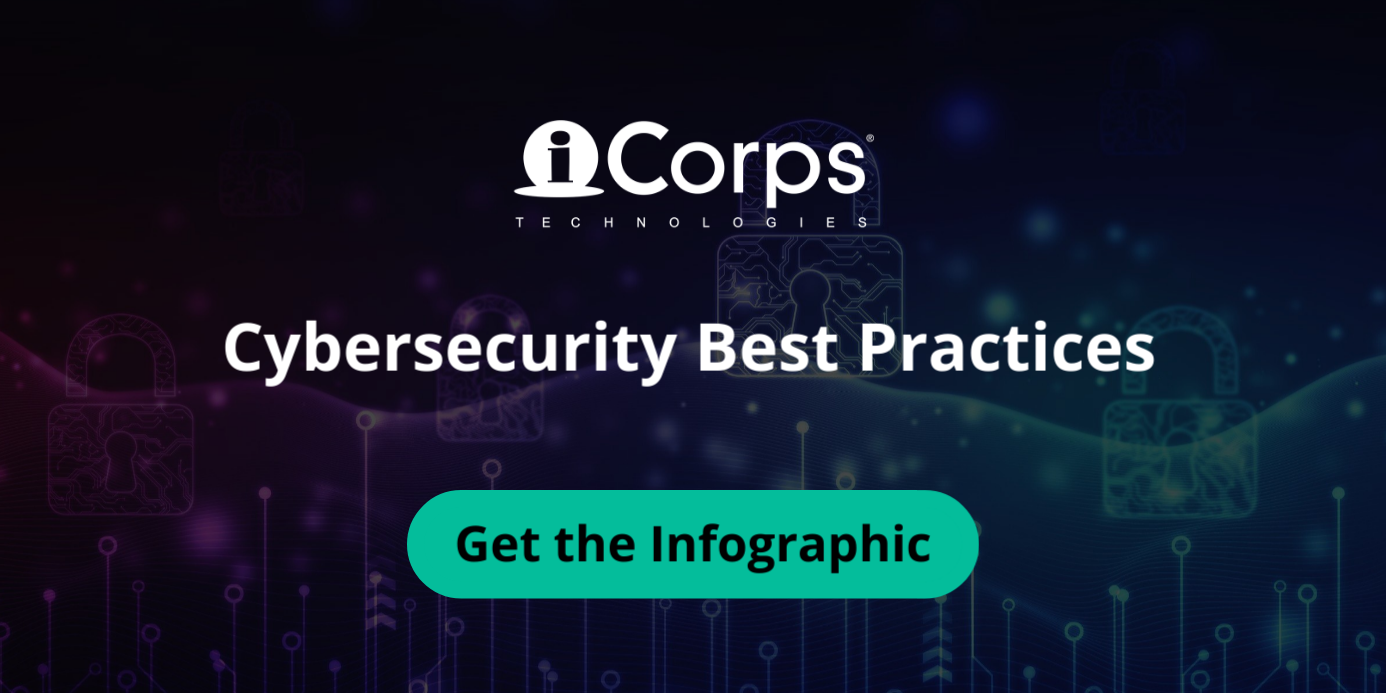In today's highly regulated industries, businesses cannot afford to overlook the critical importance of cybersecurity. Cyber-attacks can cause significant financial losses, reputational damage, regulatory fines, and legal liabilities. By implementing security practices aligned with relevant laws and regulations, you can safeguard your business data, assets, and customers to ensure comprehensive protection in an ever-evolving digital landscape.
Cybersecurity Best Practices for Your Business
Align to a Framework
In today's digital world, cybersecurity has become a top priority for businesses across all industries. While there are numerous ways to protect your business from cyber threats, implementing an enterprise security framework is one of the most effective methods.
By adopting an enterprise security framework, you can create a structured and consistent approach to cybersecurity that safeguards your data, assets, and customers. This system allows you to define roles and responsibilities, policies, procedures, standards, and metrics needed to maintain security. With everyone on the same page, your employees will know what to do to keep your business environment safe.
Several cybersecurity frameworks are available, but the NIST Cybersecurity Framework and CIS Controls are two of the most widely used. These frameworks provide guidelines and best practices to manage and mitigate cybersecurity risks. They also help businesses stay compliant with relevant laws and regulations.
Using an enterprise security framework has many benefits for your business. It provides a structured and standardized approach to cybersecurity, which helps you proactively identify and address potential vulnerabilities. This way, you can minimize the impact of cyber-attacks and protect sensitive data from unauthorized access. With an enterprise security framework, you can rest easy knowing that your business is well-protected against cyber threats.
Security First Culture
Cybersecurity is everyone's responsibility. It should be ingrained in the company's culture from top to bottom. With the proper training, awareness programs, and education initiatives, you can empower your employees to be the first defense against potential cyber threats.
- Training
Imagine having a team of employees who are well-equipped with the knowledge and skills needed to identify and respond to potential cyber-attacks. That's what training programs can do for your organization. By providing interactive workshops, seminars, and online courses, your team can stay up-to-date on cybersecurity trends, best practices, and techniques for protecting sensitive data. - Awareness Programs
But training isn't the only solution. Awareness programs are also crucial in creating a cybersecurity-conscious workforce. Regularly sharing information about the latest threats, phishing scams, and social engineering techniques can help employees stay informed and vigilant. You can take these efforts one step further by organizing cybersecurity awareness campaigns and conducting simulated phishing exercises to test employees' ability to identify and report suspicious emails. - Education
Education is another essential component of promoting a cybersecurity culture. Employees can continuously educate themselves on cybersecurity best practices by providing resources such as articles, videos, and online forums. Encouraging employees to stay updated on emerging threats and technologies helps them develop a proactive attitude toward cybersecurity. It enables them to make informed decisions regarding protecting sensitive information.
When every employee understands the importance of cybersecurity and actively safeguards the organization's data and assets, you can be confident that your organization is well-protected against cyber threats.
Detect & Respond
As businesses increasingly rely on the Internet for their operations, cyber-attacks have become a real threat to their prosperity. Fortunately, advanced tools and services have emerged to help ward off these attacks. These tools include Endpoint Detection and Response (EDR), firewalls, Intrusion Detection and Prevention Systems (IDS/IPS), Security Information and Event Management (SIEM) systems, and threat intelligence platforms.
- Endpoint Detection and Response (EDR)
EDR software is a powerful weapon in the fight against cyber threats. It uses machine learning, behavioral analysis, and threat intelligence to detect and stop advanced threats. With EDR, businesses can rest easy knowing that their endpoints, such as desktops, laptops, and servers, are protected against malicious activities. - Firewalls
Firewalls act as a protective shield between internal networks and external networks, like the Internet. They monitor and control network traffic based on security rules and can block unauthorized access, prevent data breaches, and detect potential threats. Businesses that use firewalls can rest assured that their networks are secure and that their sensitive data is safe from cybercriminals. - Intrusion Detection and Prevention Systems (IDS/IPS)
IDS/IPS systems are like vigilant watchdogs that monitor network traffic for suspicious activities and known attack patterns. They use detection methods, such as signature-based and anomaly-based, to identify potential threats. When an intrusion is detected, IDS/IPS systems can take immediate action to block or mitigate the attack, thereby preventing any significant damage. - Security Information and Event Management (SIEM)
SIEM systems provide real-time monitoring, threat intelligence, and incident response capabilities by collecting, analyzing, and correlating security events and log data across an organization's network. SIEM systems can identify patterns, detect anomalies, and generate alerts for potential threats by aggregating and analyzing security events. With SIEM, businesses can quickly respond to cyber threats and stay one step ahead of cybercriminals. - Threat intelligence platforms
Threat intelligence platforms provide organizations with up-to-date information on emerging threats, vulnerabilities, and attack techniques. They collect data from various sources, such as security vendors and research organizations, and analyze it to provide actionable insights. With threat intelligence platforms, businesses can stay informed about the latest cyber threats and proactively protect themselves.
Test for Vulnerabilities
Protect your digital assets from cyber-criminals by identifying and fixing security weaknesses. Regularly check your network, systems, apps, and devices with advanced tools to quickly address vulnerabilities before they become disastrous.
- Automated vulnerability scanners
Automated vulnerability scanners are like superheroes that can identify potential weaknesses in your company's network and systems. They scan for known vulnerabilities and misconfigurations, providing a detailed report of any issues found. By running vulnerability scans regularly, you can stay informed about potential threats and take immediate action to fix them. - Penetration testers
Penetration testers, or ethical hackers, are like detectives who can simulate real-world cyber-attacks to check for weaknesses. They use techniques to exploit potential weaknesses and provide detailed reports on their findings. Regular penetration tests can provide insights into your company's security posture, allowing you to prioritize remediation efforts accordingly. - Code analyzers
Code analyzers are like inspectors that can identify security weaknesses in software applications. They analyze the source code of applications to detect vulnerabilities, such as insecure coding practices or potential backdoors. By integrating code analyzers into the development process, you can identify and fix security issues early, reducing the risk of deploying vulnerable software. - Patch management systems
Patch management systems are like bodyguards that ensure all systems and applications are updated with the latest security patches. These systems automate deploying patches and updates, reducing the risk of exploitation through known vulnerabilities. By regularly reviewing and updating patch management systems, you can ensure that your systems are protected against the latest threats.
Audit Third-Parties
Have you ever considered the potential risks of working with third-party vendors? It's crucial to ensure your vendors are as secure as your organization to avoid potential data breaches and cyberattacks.
So, how can you effectively manage the risks associated with third-party vendors? One effective strategy is a comprehensive plan that includes regular audits and assessments of their security practices. This plan can be made easier to manage by using a platform that lets you keep track of all your vendors' security practices in one place.
You should also ensure that your service level agreements (SLAs) clearly outline your expectations for cybersecurity. By doing this, you can provide clarity and understanding about the level of security you require from your vendors.
Regular audits are also essential to ensure that your vendors protect your data and respond appropriately to security incidents. By taking a comprehensive approach to managing vendor risk, you can help ensure your organization stays secure and protected against cyber threats.
Back It Up
Do you know what's worse than a bad day at work? A data loss incident that can bring your business to a complete standstill! Cyber threats like deletion, corruption, and ransomware attacks are becoming increasingly prevalent, but don't worry; there's a solution that can save the day!
Cloud storage providers offer a reliable and secure way to backup data. With redundant storage infrastructure that stores data in multiple locations, cloud storage platforms ensure your data remains accessible and intact even in a cyber-attack or an issue with one place.
Using cloud storage for data backup comes with a host of benefits. It provides easy and quick restoration in case of accidental deletion or corruption of data and reduces the risk of ransomware attacks. With robust security measures, cloud storage providers protect your data from ransomware attacks and offer a clean backup copy to restore data in encrypted data situations.
Cloud storage also offers scalability, allowing businesses to expand their storage capacity as their data needs grow. Plus, it provides the convenience of accessing data from anywhere with an internet connection, making it ideal for remote work environments.
By leveraging the redundancy, availability, and security features provided by cloud storage platforms, businesses can ensure the integrity of their data and protect against deletion, corruption, or ransomware attacks.
Plan & Insure
Meet the three elements that work together like a dream team: disaster recovery, incident response, and cybersecurity.
- Disaster recovery
Disaster recovery is your first line of defense against any crisis, helping you identify potential threats, develop effective strategies, and restore normalcy. With data backup, redundancy systems, and regular testing, you can minimize the impact of disasters and keep your business up and running. - Incident response
The next superhero, helping you detect, respond to, and recover from security breaches. A well-coordinated plan with designated teams and tools can mitigate the damage caused by security incidents. By taking a proactive approach, you can prevent minor incidents from turning into major catastrophes that can devastate your business. - Cyber insurance
Last but certainly not least, cyber insurance acts as the ultimate safety net. It covers all costs incurred due to a cyber-attack or data breach, including legal fees, public relations, and credit monitoring services. With cyber insurance, you can rest assured that your business can thrive and recover from unforeseen circumstances.
Stay ahead of the curve and mitigate cybersecurity risks by aligning with security frameworks, creating a security-first culture, using advanced tools to detect and respond to threats, regularly testing for vulnerabilities, auditing third-party vendors, backing up data, and having a comprehensive disaster recovery and incident response plan.
Implementing these best practices and techniques can go a long way in safeguarding your organization against cyber threats.





